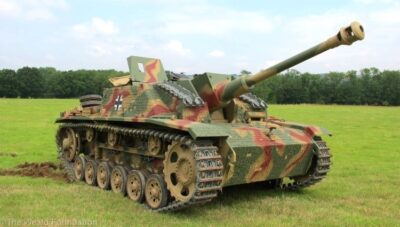An example of one of our regular Inside Track articles
The story of our latest StuG III restoration is in large part the story of Canadian army officer Farley Mowat and his extraordinary adventures at the end of the Second World War.
When we began the restoration we had little . . .

